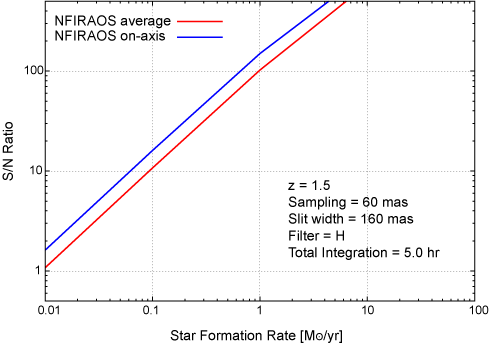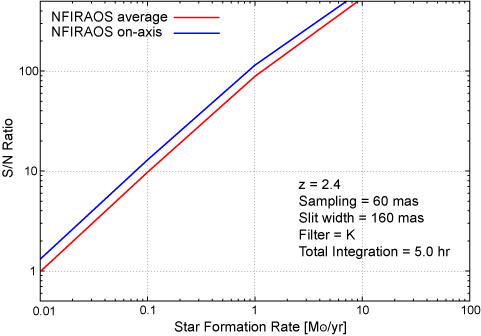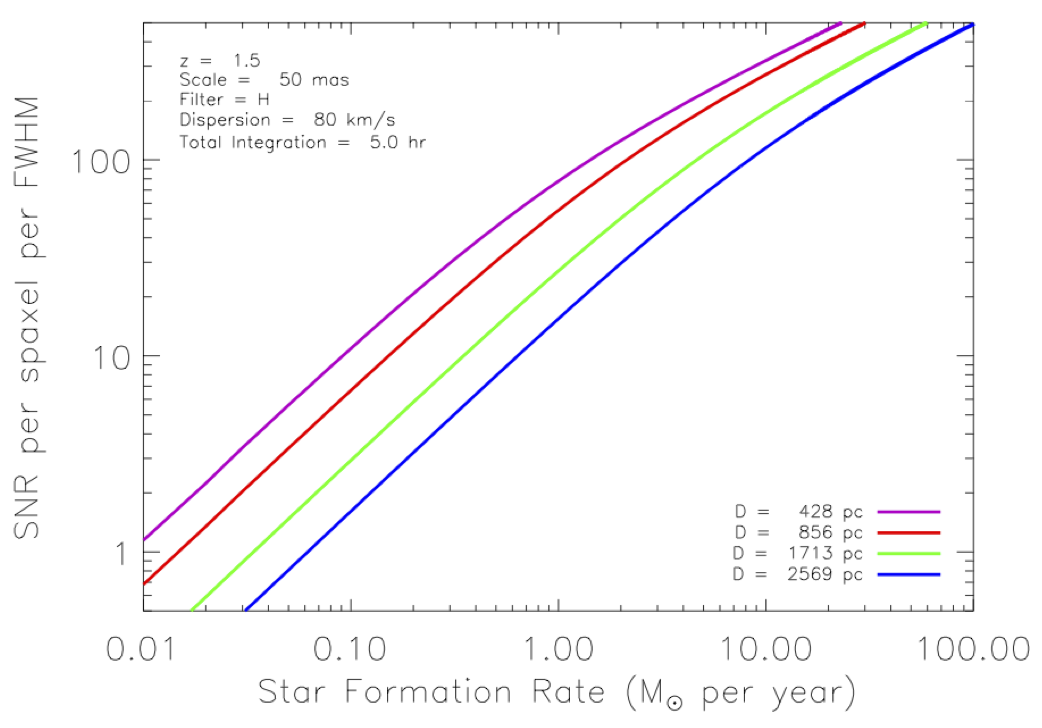| H&alpha Redshift |
H&alpha@z=1.5 (H-band) |
H&alpha@z=2.4 (K-band) |
|
| H&alpha Wavelength |
1.65 um (&lambda0 of H-band) |
2.20 um (&lambda0 of K-band) |
|
| Cosmology Parameter |
H0=71, &OmegaM=0.27, &OmegaV=0.73 |
Calculator |
| Lookback Time |
9.5 Gyr |
10.9 Gyr |
Calculator |
| Light Distance (dL) |
35.906 Gly |
64.218 Gly |
Calculator |
| Scale |
8540 pc/arcsec |
8257 pc/arcsec |
Calculator |
| Sampling Scale |
0.06 arcsec (60 mas) |
0.06 arcsec (60 mas) |
|
| Slit width |
0.16 arcsec (160 mas) ~2.7pix |
0.16 arcsec (160 mas) ~2.7pix |
MOSFIRE minimum slit width |
| Angular Diameter at each redshift |
0.16 mas = 1366 pc |
0.16 mas = 1321 pc |
|
| Assumed Encircled Energy inside Slit |
NFIRAOS wide-field mode for &Phi 120 arcmin
On-axis: 0.65@J, 0.75@H, 0.8@K
Average: 0.4@J, 0.5@H, 0.6@K |
TMT Instrument Handbook(2010) |
| Exposure Time |
18000 s (900s x 20) |
18000 s (900s x 20) |
|
| [OII]3727 Wavelength |
9317 A @z-band |
1.27 um @J-band |
|
| Hβ4860 Wavelength |
1.22 um @J-band |
1.65 um @H-band |
|
| [OIII]5007 Wavelength |
1.25 um @J-band |
1.70 um @H-band |
|

 IRIS IFS(Integral Field Spectroscopy) sensitivity in case of 50 mas sampling. (from IRIS Homepage)
IRIS IFS(Integral Field Spectroscopy) sensitivity in case of 50 mas sampling. (from IRIS Homepage)
